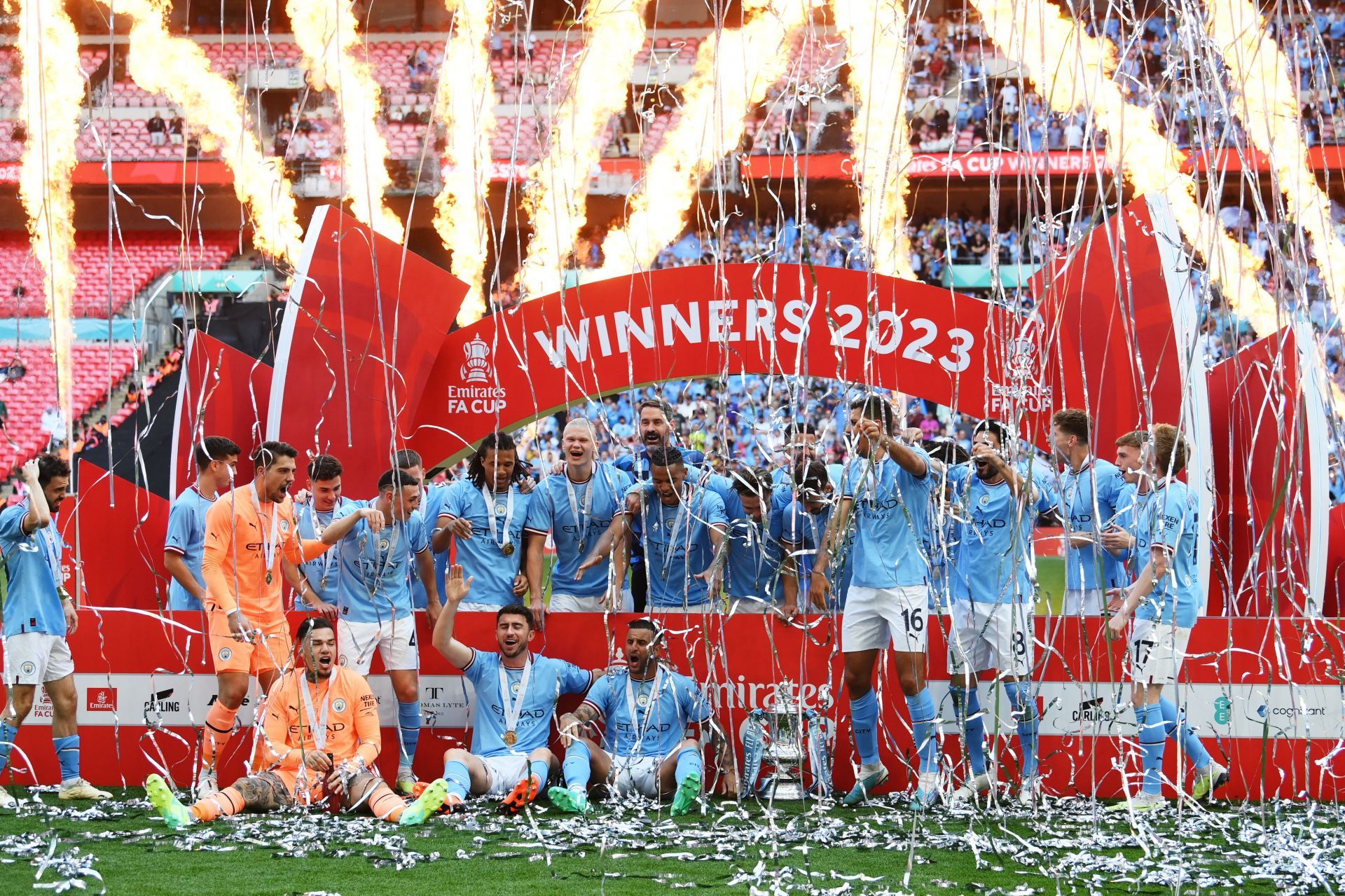
FA Cup final featured Pep Guardiola's new direct approach and glaring Manchester United shortcomings
Manchester City manager Pep Guardiola is well on his way to a continental treble after his team's 2-1 FA Cup final triumph over eternal rivals Manchester United at the weekend.
In just under a week, the Cityzens will have the opportunity to win their first UEFA Champions League. It will be Pep Guardiola's third European Cup glory after years of comic and tragic failures in the competition at the Etihad.
City's FA Cup final against United at the Wembley opened on a promising note. Captain Ilkay Gundogan scored within 12 seconds with a perfect volley, a goal that crystallised Guardiola's evolution with the team. That was also the quickest strike in FA Cup final history.
Let's take a deeper look at the goal and try to discern what it reveals from a tactical standpoint.
Evolution of Pep Guardiola and Manchester City
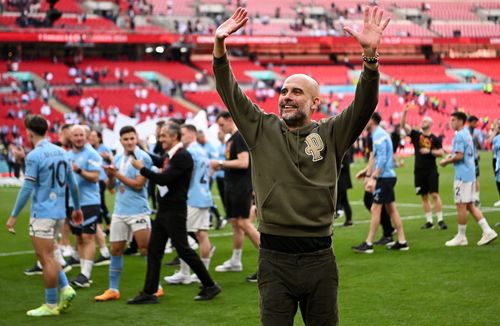
One of the key tenets of Pep Guardiola's system is a heavy reliance on short passing. Defenders are asked to play the ball out from the back, even at the cost of possession turnover in vulnerable areas at times.
It's a football philosophy first enshrined in the Dutch concept of total football, of which Barcelona became the pioneers under Johan Cruyff's tutelage. Guardiola is Cruyff's finest student and has perhaps outshone his mentor in employing the system both in terms of managerial longevity and success.
However, more recently, Guardiola has actively looked for ways to tinker with his tried and tested system, which has yielded him fabulous results over the years at multiple clubs.
To be specific, Guardiola's Manchester City have looked to clear the ball from the back rather than playing short passes out of defence. Despite having world-class ball-playing centre-halves like John Stones, Manuel Akanji and Nathan Ake, Guardiola is more tolerant nowadays if his defenders hack the ball clear when under pressure.
Gone are the days when Gerard Pique, Carles Puyol or Eric Abidal looked to play neat triangles to bring the ball out of tight areas. In fact, Guardiola is perhaps the first manager in the game's history who puts more emphasis on a goalkeeper's ball-distributing abilities rather than his shot-stopping prowess.
What's so unique about Gundogan's goal?
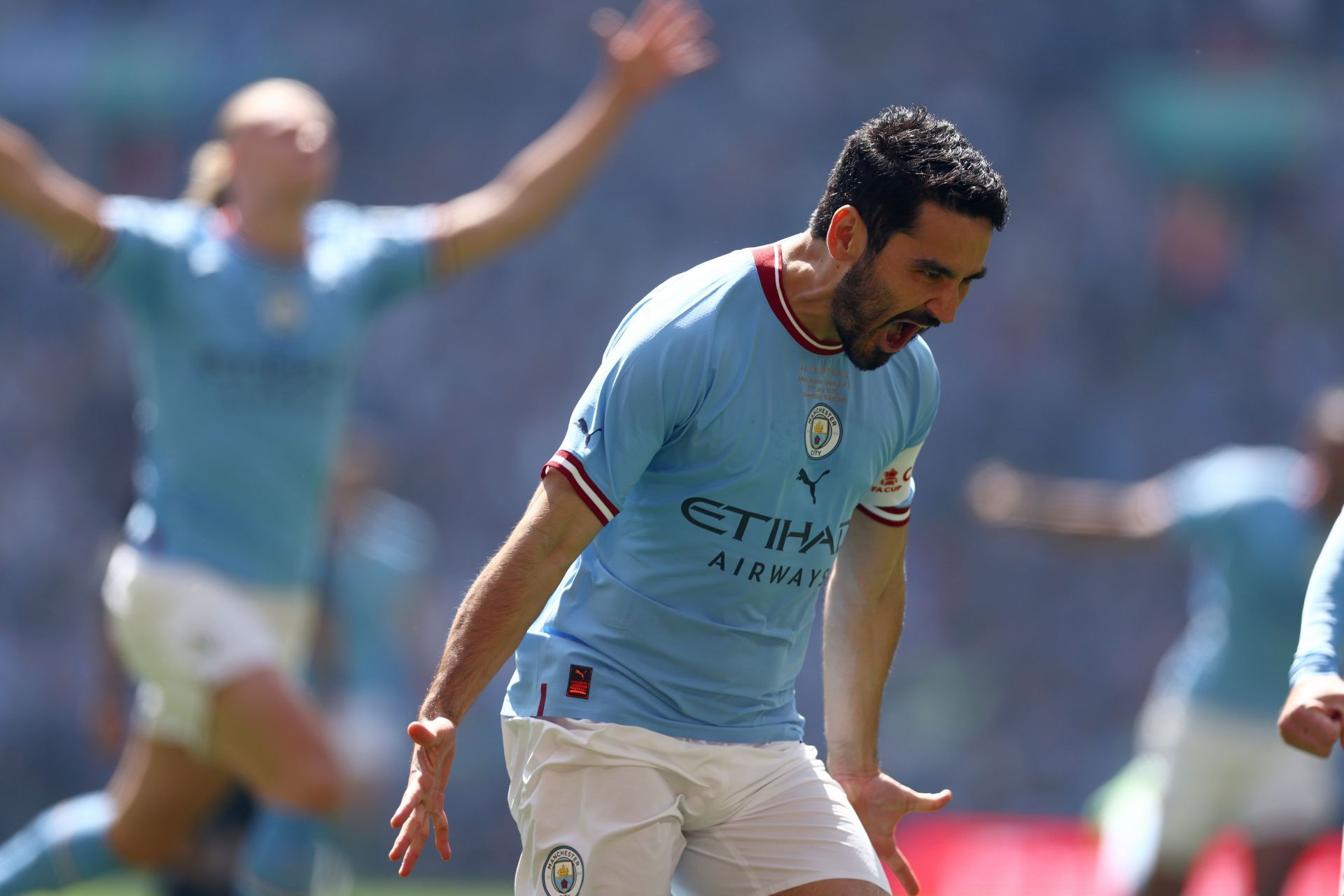
To many, Ilkay Gundogan's early strike in the FA Cup final was nothing more than an academic acknowledgement of the fastest goal scored in FA Cup final history.
However, more than just being a record, the goal had another important significance. In reality, it was a very un-Guardiola like goal, more so, as it was created from an unlikely source.
Manchester City's first goal in the FA Cup final came from a long clearance by their second-choice goalkeeper Stefan Ortega. Then came two headers, in what seemed like a mini pinball game, first from Erling Haaland and then from Kevin De Bruyne-Victor Lindeloff, before Gundogan produced a neat volley.
It was a very "English" goal in the sense that it did not seem like a goal a Guardiola team is likely to score. It was a strike reminiscent of Alan Shearer's from the 90's or from the early days of Steven Gerrard. It was a goal from the days of direct route football, of Sir Alex Ferguson's 4-4-2 and the "Premiership" days.
It did not have an elaborate build up, neither a sequence of neat short passes nor a one-touch flicked pass. Instead, it had a perfectly timed volley from outside the penalty box and two headers preceding it. It was direct-route football.
In short, it was a very un-Guardiola, un-tiki taka, un-Cruyffian goal. That's not to say that possession-based entities never score such goals. As a contemporary example, Xavi's Barcelona tend to be more direct these days, especially since the arrival of Robert Lewandowski.
Meanwhile, after the arrival of Erling Haaland last summer, Pep Guardiola, too, has been happy to be more direct going forward than before.
Shortcomings of Manchester United
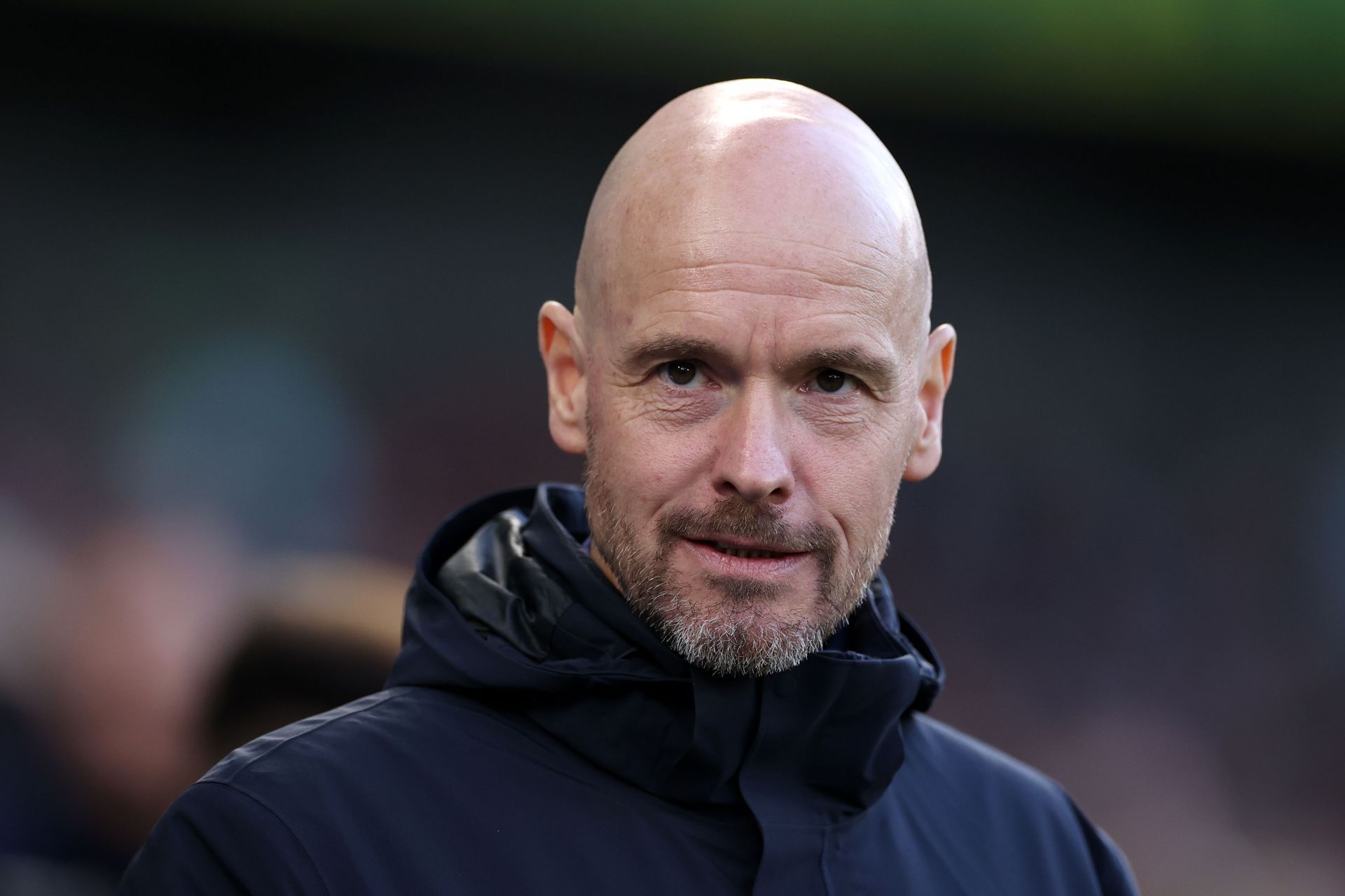
Erik ten Hag's biggest problem is that he does not have a press-resistant holding midfielder of the ilk of Guardiola's Ilkay Gundogan, Barcelona's Frenkie de Jong, Arsenal's Jorginho, Brighton's Alexis Mac Allister or Bayern Munich's Joshua Kimmich. Bruno Fernandes is a good 'releaser' of the ball, but his lack of ball retention makes him a problematic proposition for Ten Hag.
Like Pep Guardiola, his counterpart in the FA Cup final, Ten Hag also likes to play possession football but needs ball-playing holding midfielders in his squad. He has tried to fill this gap by using Casemiro in more advanced positions, asking him to perform the holding midfielder role.
However, Casemiro has the spirit of a defender, and Ten Hag knows he must rope in a holding midfielder in the summer.
What's next for Ten Hag and Guardiola?
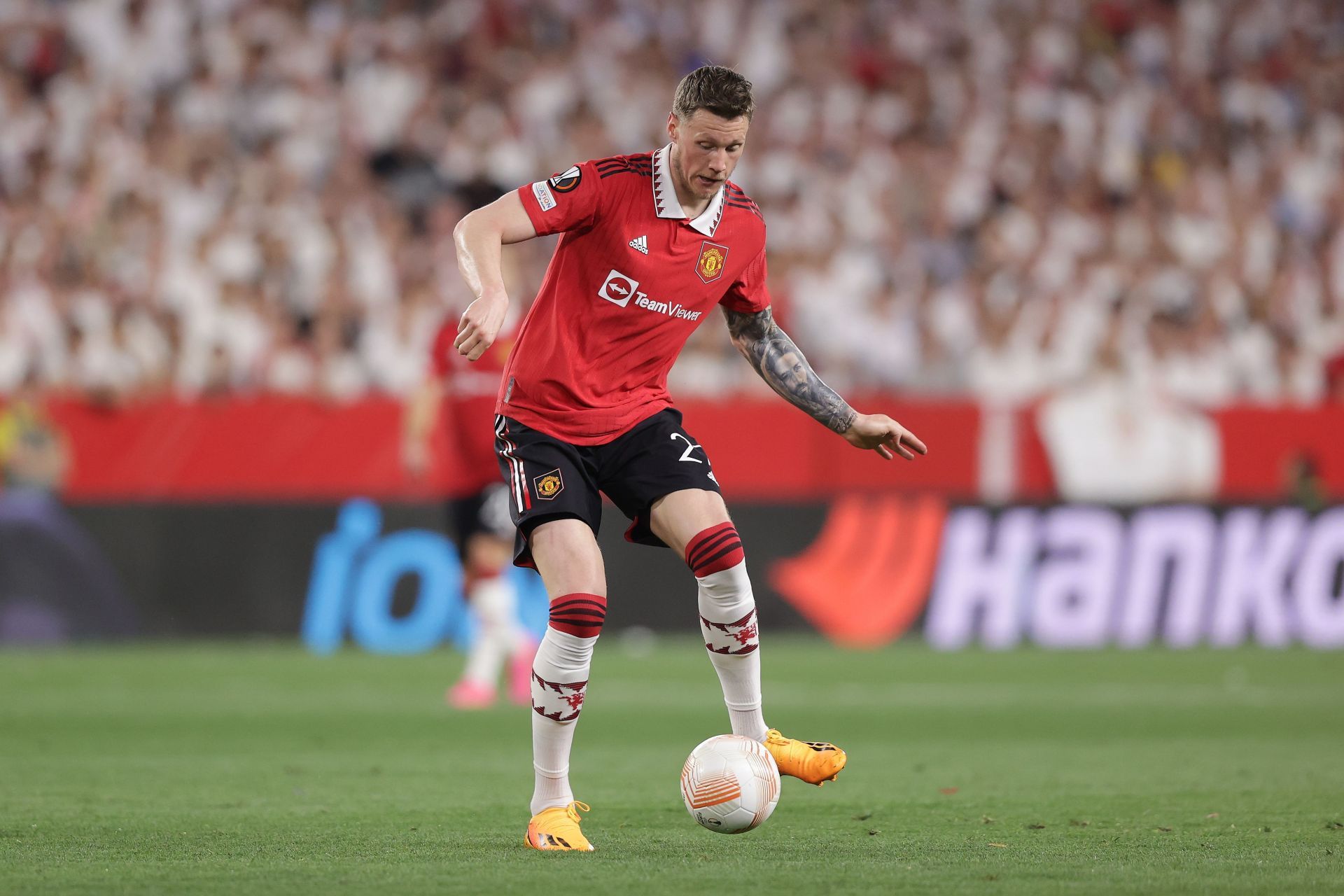
Pep Guardiola has a Champions League to win in a week's time, while Ten Hag has a squad to build. Both men must be appreciated for the work they have done with their respective squads in the 2022-23 season, but even greater things are expected from Ten Hag next season.
He has certainly exceeded expectations by ending a six-year trophy drought and returning United to the Champions League. As for Pep Guardiola, more glory awaits in the form of City's maiden continental treble, joining United (1999) as the only English clubs to do so.